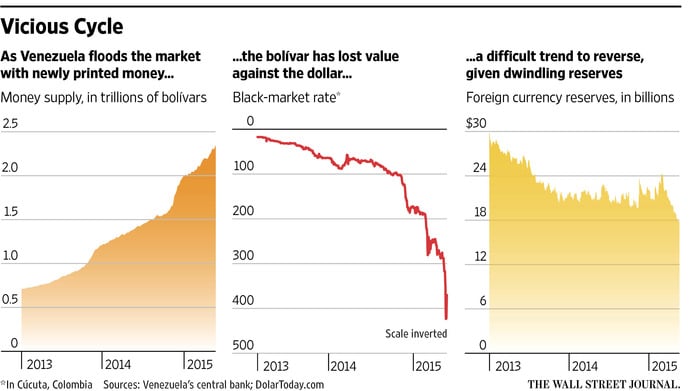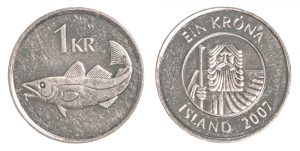Latest news about Bitcoin and all cryptocurrencies. Your daily crypto news habit.

Earlier this year we witnessed a mini flash crash that hit the fiat currency markets. It took approximately seven minutes for the Australian dollar to plummet against the Japanese yen, which surged to levels that it had last held almost a decade ago. Like a number of fiat currencies, bitcoin is going through its own boom and bust cycle which is something it has experienced before. Historically, several global currencies have suffered far worse volatility, with hyperinflation often the outcome.
Also Read: Back to Basics: What Is Money?
USD: The World’s Reserve Currency
Before we run down some of the major currency crashes in history, it is worth noting that the world’s reserve currency is currently the U.S. dollar. The dollar became the reserve currency back when President Richard Nixon abandoned the gold standard. In 1944 the Bretton Woods agreement kickstarted the dollar into its current position. Prior to the dollar, the British pound sterling was the dominant global reserve currency. Both the euro and Japanese yen have also become increasingly popular as a reserve currency given the size of their respective economies. The strength of the U.S. dollar is crucial. For example, a strong dollar or increase in the exchange rate is better for individuals because it makes imports cheaper and lowers inflation.
Earlier this year, Bank of England governor Mark Carney said the Chinese yuan could be an alternative reserve currency. Referring to the Chinese currency, Carney said:
As the world re-orders, this disconnect between the real and financial is likely to reduce, and in the process other reserve currencies may emerge. In the first instance, I would expect these will be existing national currencies, such as the RMB.
Most of the world’s currency prices fluctuate based on the supply and demand in the foreign exchange market. The stability of any currency depends on consumer confidence, the political state and economic performance, all of which affect currency strength. Those interested in crypto should review the history of currency crashes in order to better understand volatility and how easy it is for currencies to rise and fall.
Venezuelan Bolivar
The bolivar is one of the most recent high profile cases of a currency collapsing. For Venezuela it all started back in June 2010 when President Hugo Chávez declared an economic war due to the increasing shortages in Venezuela. Since then the crisis has only intensified under the Maduro government, growing more severe as a result of low oil prices in early 2015, and a drop in oil production from lack of maintenance and investment. Since 2016, political discontent in Venezuela has been fueled by increasing hyperinflation, power cuts, and shortages of food and medicine. In 2017, U.S. President Donald Trump’s administration signed an executive order that prohibits dealings in new debt from the Venezuelan government or its state oil company. This situation forced President Maduro to sidestep the U.S. and phase in use of its controversial digital currency, the “petro,” for oil sales.
 Collapse of Venezuelan Bolivar.
Collapse of Venezuelan Bolivar.
Zimbabwean Dollar
The Republic of Zimbabwe in Southern Africa experienced the worst of its inflation in 2008 which led to the abandonment of the currency. Hyperinflation drove a period of currency instability in Zimbabwe which had begun in the late 1990s. Peak hyperinflation occurred in mid-November 2008 with a rate estimated at 79,600,000,000 percent per month. This resulted in U.S.$1 becoming equivalent to the staggering sum of Z$2,621,984,228.
Argentinian Peso
Argentina is Latin America’s third largest economy. Since its independence from Spain in 1816, the country has defaulted on its debt many times and inflation has often been in the double digits. Argentina experienced record growth until the OPEC oil embargo in the mid-1970s. After this, civil and political unrest followed and budget and trade deficits threatened the onset of a severe recession. Triggered by this, the government resorted to printing money. A military coup in 1976 brought further economic decline and more inflation as the money supply continued to expand. Unfortunately, by 1982 GDP was in free fall and dropped 12 percent year over year, the worst since the Great Depression.
Icelandic Króna
 Between 2008 and 2011 we witnessed the Icelandic financial crisis. Relative to the size of its economy, Iceland’s systemic banking collapse was the largest experienced by any country in economic history. In October 2008, Iceland nationalized its three largest banks, Kaupthing Bank, Landsbanki, and Glitnir Bank, which had defaulted on $62 billion of foreign debt. As trust in the banks faded, this led to a sharp depreciation of the Icelandic króna in 2008.
Between 2008 and 2011 we witnessed the Icelandic financial crisis. Relative to the size of its economy, Iceland’s systemic banking collapse was the largest experienced by any country in economic history. In October 2008, Iceland nationalized its three largest banks, Kaupthing Bank, Landsbanki, and Glitnir Bank, which had defaulted on $62 billion of foreign debt. As trust in the banks faded, this led to a sharp depreciation of the Icelandic króna in 2008.
Troubled Turkish Lira
In 2018 the Turkish lira slumped to a record low against the U.S. dollar. Turkey’s struggling currency is putting huge amounts of pressure on the country’s massive debt obligation to other countries. From an educational perspective, it is worth watching Turkey’s economic troubles unfold. Most recently we have seen the lira on the verge of collapse in a crisis that has provided opportunity for some investors.
Many observers have reveled in the fall in value of bitcoin and cryptocurrencies. By reviewing the history of currencies, however, it becomes evident that there is always volatility to some degree. This is nothing new, and cryptocurrencies, like fiat currencies, are going through typical boom and bust cycles. With hyperinflation impossible with fixed supply currencies like bitcoin, the odds of complete devaluation are extremely slender, while the potential upside for investors with the patience to hodl is huge.
Would the collapse of a major global currency create opportunity for bitcoin? Let us know in the comments section below.
Images courtesy of Shutterstock and the Wall Street Journal.
Need to calculate your bitcoin holdings? Check our tools section.
Disclaimer
The views and opinions expressed in this article are solely those of the authors and do not reflect the views of Bitcoin Insider. Every investment and trading move involves risk - this is especially true for cryptocurrencies given their volatility. We strongly advise our readers to conduct their own research when making a decision.
